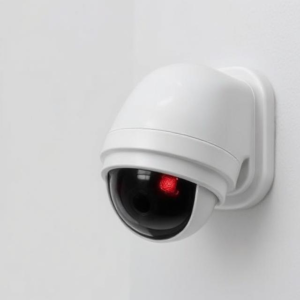What Are Infrared Sensors?
An infrared sensor is a device that detects infrared light, which is a type of light that we can’t see with our eyes, but we can feel it as heat. These sensors can sense heat or the presence of objects that are giving off infrared radiation (like your body or a warm object).

How Do They Work?
- Infrared Light: Everything that has temperature above absolute zero (-273°C) gives off infrared radiation. This means humans, animals, warm objects, and even the earth itself release heat in the form of infrared light.
- Detection: The infrared sensor detects this invisible infrared light and turns it into a signal that can be understood by a machine or system.
- In passive infrared sensors (PIR), the sensor detects the infrared radiation coming from a warm object, like a person walking by. The sensor doesn’t emit any light; it just “sees” the infrared radiation from the environment.
- In active infrared sensors, the sensor sends out infrared light (often in the form of a beam) and then measures how much is reflected back. The reflection helps it detect objects or measure distances.
Types of Infrared Sensors:
- PIR Sensors (Passive Infrared):
- They detect changes in the amount of infrared light coming from a specific area.
- Commonly used in motion detectors, like the ones in security systems or automatic lighting.
- They “see” the warmth of a person or animal moving within their range.
- Active Infrared Sensors:
- These sensors emit infrared light and measure how it bounces back.
- Common in devices like distance sensors (for example, in a robotic vacuum or parking sensor in cars).
- They can tell how far away something is based on how long it takes for the infrared light to return.
Applications of Infrared Sensors:
- Security: They are used in motion detection for security systems. When someone walks by, the infrared sensor detects the body heat and triggers an alarm or turns on lights.
- Thermal Cameras: In medical or industrial settings, IR sensors help create images based on temperature differences, like identifying overheating machinery or even spotting fever in people.
- Robotics and Navigation: Robots and devices like autonomous cars can use infrared sensors to navigate and avoid obstacles.
In Short:
- Infrared sensors can “see” heat (infrared radiation) that we can’t, helping with things like motion detection, temperature measurement, and even object detection.
- They are useful in many areas, from security to medical imaging.
Tags: active infrared sensors, active IR beam sensors, advantages of infrared sensors, ambient infrared radiation, body heat detection sensors, detecting infrared light, disadvantages of infrared sensors, distance measuring sensors, environmental infrared sensing, heat sensing technology, heat signature detection., heat-based detection systems, how infrared sensors work, human body heat detection, human detection with IR, industrial IR sensors, infrared detection for safety, infrared navigation sensors, infrared object detection, infrared radiation sensors, infrared sensing applications, infrared sensing in cameras, infrared sensor applications, infrared sensors, infrared sensors in automation, infrared sensors in security systems, infrared sensors in smart devices, infrared technology, infrared temperature sensors, infrared-based obstacle detection, invisible light sensors, IR light detection, IR motion sensors, IR sensors, IR sensors for medical use, IR sensors for robotics, IR sensors in autonomous vehicles, IR sensors in cars, IR sensors in electronics, motion detection sensors, motion tracking using IR, night vision IR sensors, non-contact temperature measurement, parking sensor infrared, passive infrared sensors, PIR motion detectors, PIR sensors, security alarm infrared sensor, sensor that detects heat, Sensors, smart home IR sensors, thermal detection sensors, thermal imaging sensors, thermal sensors, types of infrared sensors, what are infrared sensors


